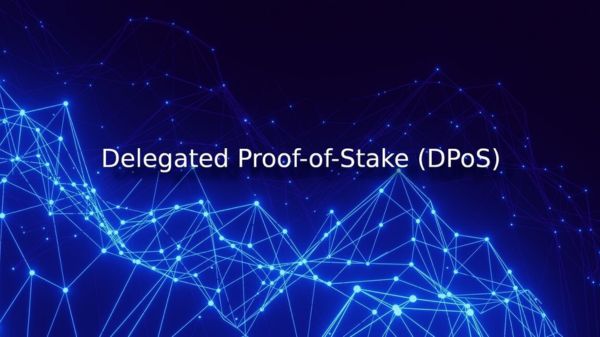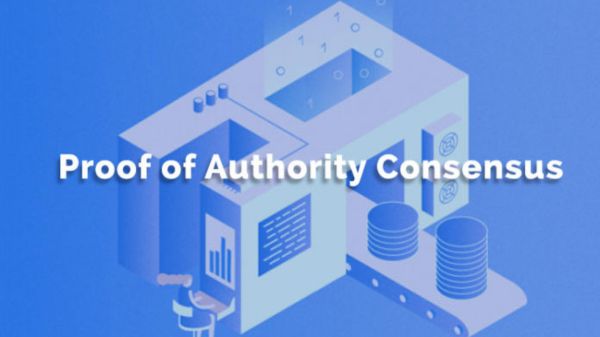Categories: General Information
Exploring Blockchain Consensus Algorithms - Building Trust in a Decentralized World
Discover the world of blockchain consensus algorithms and their role in establishing trust in a decentralized environment. Explore the different types of consensus algorithms and their impact on blockchain networks.
In the world of blockchain technology, consensus algorithms play a crucial role in ensuring the security, immutability, and decentralization of the network. Consensus algorithms determine how nodes in a blockchain network agree on the validity and ordering of transactions, enabling trust and consensus without the need for a central authority. In this blog, we will delve into the various blockchain consensus algorithms, their characteristics, and their impact on the blockchain ecosystem.
Table of Contents
What are Consensus Algorithms?
What are consensus algorithms? Consensus algorithms are crucial components of a blockchain network that ensure agreement and consistency among participants. They determine how transactions are validated and added to the blockchain. Consensus algorithms enable multiple nodes in a decentralized network to reach a consensus on the state of the ledger without relying on a central authority. Different consensus algorithms, such as Proof of Work (PoW), Proof of Stake (PoS), and Delegated Proof of Stake (DPoS), employ various mechanisms to achieve consensus. These algorithms consider factors like computational power, stake ownership, or voting to determine the consensus. Consensus algorithms play a vital role in maintaining the security, scalability, and trustworthiness of blockchain networks.

Common types of Consensus Algorithms
Proof of Work (PoW)
One of the earliest and most well-known consensus algorithms is Proof of Work (PoW), used by Bitcoin and several other cryptocurrencies. PoW requires network participants, known as miners, to solve complex mathematical puzzles to validate and add new blocks to the blockchain. The first miner to solve the puzzle is rewarded with newly minted coins. PoW ensures security by making it computationally expensive to manipulate the blockchain, as it would require a significant amount of computational power.

Proof of Stake (PoS)
In contrast to PoW, Proof of Stake (PoS) consensus algorithms select validators based on the number of coins they hold and "stake" in the network. Validators are chosen to create new blocks based on a random selection process, weighted by their stake. PoS is considered more energy-efficient than PoW since it doesn't require extensive computational power. It also aligns the interests of validators with the stability and security of the network since they have a financial stake at risk.

Delegated Proof of Stake (DPoS)
Delegated Proof of Stake (DPoS) takes PoS a step further by introducing a voting mechanism where token holders elect a set number of delegates to validate transactions and produce blocks on their behalf. These elected delegates are responsible for maintaining network consensus. DPoS is known for its scalability and faster block confirmation times, making it suitable for high-throughput blockchain networks.

Practical Byzantine Fault Tolerance (PBFT)
Practical Byzantine Fault Tolerance (PBFT) is a consensus algorithm designed for permissioned blockchains, where participants are known and trusted. PBFT enables a network to tolerate Byzantine faults, where nodes may exhibit malicious behavior or fail to operate correctly. PBFT ensures consensus by having a majority of nodes agree on the validity of transactions through a multi-round voting process. PBFT provides fast finality and high throughput, making it suitable for enterprise-grade blockchain applications.
Proof of Authority (PoA)
Proof of Authority (PoA) consensus algorithm relies on a predefined set of validators, known as authorities, who are responsible for validating transactions and creating new blocks. Validators are identified and trusted entities within the network, typically selected based on their reputation and expertise. PoA offers fast block confirmation times and high throughput, making it suitable for private or consortium blockchains.

How consensus algorithms work?
Consensus algorithms are a vital component of blockchain technology, enabling distributed systems to reach agreement on the state of a decentralized ledger without relying on a central authority. Consensus algorithms ensure that all participants in the network come to a consensus on the validity of transactions and maintain a consistent and immutable blockchain. Here's an overview of how consensus algorithms work:
- Problem of Double Spending: One of the main challenges in decentralized systems is the prevention of double spending, where a user tries to spend the same cryptocurrency or digital asset multiple times. Consensus algorithms ensure that only valid and non-duplicative transactions are accepted and recorded on the blockchain.
- Nodes in the Network: A blockchain network consists of multiple nodes (computers) that validate and process transactions. Each node maintains a copy of the entire blockchain ledger.
- Transaction Propagation: When a user initiates a transaction, it is broadcasted to the network, and each node receives the transaction information.
- Consensus Process: Consensus algorithms facilitate the process by which nodes in the network agree on the validity and order of transactions to be added to the blockchain.
- Consensus Rules: Each blockchain protocol defines specific rules for achieving consensus. The rules determine how new blocks are created, how validators are selected, and how conflicts are resolved.
- Proof-of-Work (PoW) Consensus: In PoW-based blockchains (e.g., Bitcoin), nodes compete to solve complex mathematical puzzles. The first node to solve the puzzle gets the right to add the next block to the blockchain. This process is resource-intensive and requires significant computational power.
- Proof-of-Stake (PoS) Consensus: PoS-based blockchains (e.g., Ethereum 2.0) use a different approach. Validators are chosen to create new blocks based on the number of coins they "stake" as collateral. The more coins a validator stakes, the higher the chance of being selected to propose the next block.
- Delegated Proof-of-Stake (DPoS): DPoS is a variation of PoS where token holders vote for a small group of delegates who take turns producing blocks. These delegates are responsible for validating transactions and maintaining the blockchain.
- Practical Byzantine Fault Tolerance (PBFT): PBFT is used in some permissioned blockchains. Nodes in the network exchange messages to reach agreement on the order of transactions. It requires a minimum percentage of nodes (usually two-thirds) to be honest for consensus to be achieved.
- Asynchronous Byzantine Fault Tolerance (aBFT): aBFT, used in some blockchain systems, allows consensus to be reached even in the presence of malicious nodes or network delays.
- Finality: Consensus algorithms aim to achieve "finality," meaning once a transaction is added to the blockchain, it is irreversible and considered confirmed.
Consensus algorithms ensure that blockchain networks remain secure, decentralized, and resistant to attacks. However, each algorithm has its strengths and weaknesses, and different blockchains use different consensus mechanisms based on their specific requirements and goals.
Applications of Consensus Algorithms
Consensus algorithms have a wide range of applications beyond their fundamental role in maintaining the integrity of blockchain networks. These algorithms are designed to achieve agreement among distributed participants, making them useful in various decentralized systems. Here are some key applications of consensus algorithms:
- Blockchain Networks: Consensus algorithms are the backbone of blockchain networks, enabling decentralized agreement on the state of the ledger and the validity of transactions. They ensure that all nodes in the network come to a consensus on the order of transactions, preventing double-spending and ensuring data consistency.
- Cryptocurrencies and Digital Assets: Consensus algorithms are essential in cryptocurrencies and digital asset networks. They validate and secure transactions, ensuring that only valid transactions are added to the blockchain and that users cannot spend the same asset multiple times.
- Decentralized Finance (DeFi): DeFi platforms utilize consensus algorithms to manage lending, borrowing, and trading operations in a trustless and decentralized manner. These algorithms determine the rules for interest rates, collateralization, and liquidations in DeFi protocols.
- Supply Chain Management: Consensus algorithms can be used in supply chain management to verify the authenticity and integrity of product information and trace the movement of goods from origin to destination. They enhance transparency and reduce the risk of fraud or counterfeiting.
- Healthcare: In healthcare systems, consensus algorithms can be employed to maintain secure and tamper-resistant medical records and data sharing between hospitals, doctors, and patients. Patients can retain control over their sensitive health data while securely granting access to authorized parties.
- Internet of Things (IoT): In IoT applications, consensus algorithms can facilitate coordination and communication among interconnected devices and sensors. They ensure data integrity and enhance security in IoT networks.
- Voting and Elections: Consensus algorithms can be applied to conduct secure and verifiable electronic voting and elections. They prevent tampering and guarantee the integrity of the voting process.
- Decentralized Identity (DID): DID systems leverage consensus algorithms to create self-sovereign identities, giving users control over their personal information and allowing them to share it securely with trusted parties.
- Gaming and Virtual Assets: Consensus algorithms are used in blockchain-based gaming platforms and virtual asset markets. They verify ownership and transactions of in-game assets, enabling players to securely trade and transfer digital items.
-Decentralized Content Platforms: Consensus algorithms support the decentralized content distribution and incentivization models. They enable creators to be fairly compensated for their content, and users can access and verify authentic content.
- Energy and Resource Management: In decentralized energy and resource management systems, consensus algorithms can optimize resource allocation, enhance efficiency, and enable peer-to-peer energy trading in smart grid networks.
Consensus algorithms are versatile and continue to find new applications as the technology evolves. Their use cases extend beyond blockchain and cryptocurrencies, shaping the development of decentralized systems across various industries and domains.
The future of consensus algorithms
The future of consensus algorithms in the blockchain space holds exciting developments as the technology continues to evolve and adapt to emerging needs. While established consensus mechanisms like Proof-of-Work (PoW) and Proof-of-Stake (PoS) have been widely used, ongoing research and experimentation are leading to the exploration of more efficient and scalable alternatives. Here are some trends and possibilities for the future of consensus algorithms:
- Scalability Solutions: Scalability remains a crucial challenge for blockchain networks. In the future, we can expect the emergence of consensus algorithms that focus on achieving higher transaction throughput and reduced latency, allowing blockchains to handle a larger number of transactions per second.
- Energy Efficiency: PoW-based blockchains, like Bitcoin, consume significant energy due to the computational power required for mining. As environmental concerns grow, there will likely be a shift toward more energy-efficient consensus mechanisms, such as PoS, PoS variations (e.g., Delegated PoS, Proof-of-Authority), or hybrid consensus models.
- Layer 2 Solutions: Layer 2 solutions, such as Lightning Network for Bitcoin and various state channels for Ethereum, aim to enhance scalability and reduce congestion on the main blockchain. These off-chain scaling solutions may complement existing consensus mechanisms by handling micropayments and lower-value transactions.
- DeFi and Governance Integration: DeFi (Decentralized Finance) platforms rely heavily on consensus mechanisms to facilitate various financial services. Future consensus algorithms may be designed to support DeFi protocols and offer more sophisticated governance mechanisms.
- Interoperability: Cross-chain interoperability is becoming increasingly important in the blockchain space. Future consensus algorithms may focus on enabling seamless communication and value transfer between different blockchain networks.
- Security and Finality: As blockchain applications become more critical and diverse, there will be a greater emphasis on consensus mechanisms that offer enhanced security against attacks and faster transaction finality.
- Quantum Resistance: With the potential threat of quantum computers to traditional cryptographic systems, there may be a push toward developing quantum-resistant consensus algorithms to safeguard blockchain networks from quantum attacks.
- Permissioned and Hybrid Models: While public blockchains have dominated the space, there is growing interest in permissioned blockchains for enterprise use cases. Future consensus algorithms may cater to the needs of private and consortium blockchains.
- Asynchronous Consensus: Some research efforts are exploring asynchronous consensus algorithms that do not require tight time synchronization between nodes, making them suitable for distributed networks with unpredictable delays.
- Incentive Mechanisms: Novel incentive mechanisms may be developed to encourage participation and discourage malicious behavior in consensus protocols.
The future of consensus algorithms will likely be a diverse landscape, with different blockchains and applications adopting approaches tailored to their specific requirements. As blockchain technology matures and more real-world use cases emerge, consensus algorithms will continue to evolve to meet the demands of a more decentralized, secure, and scalable digital economy. Research and development in this area will be critical in shaping the future of blockchain consensus.
Conclusion
Blockchain consensus algorithms play a critical role in establishing trust, security, and decentralization in the blockchain ecosystem. The choice of consensus algorithm depends on the specific requirements of the blockchain network, including factors such as scalability, energy efficiency, security, and governance. As blockchain technology continues to evolve, new consensus algorithms are being developed to address the limitations and challenges of existing ones. Understanding the different consensus algorithms empowers individuals and organizations to make informed decisions when designing and participating in blockchain networks.
By embracing blockchain consensus algorithms, we are paving the way for a decentralized future, where trust is established through distributed consensus rather than relying on centralized authorities. As the technology continues to mature, consensus algorithms will continue to evolve, enabling new possibilities and driving innovation across various industries. Follow https://uniultra.xyz/ for more blockchain updates.
